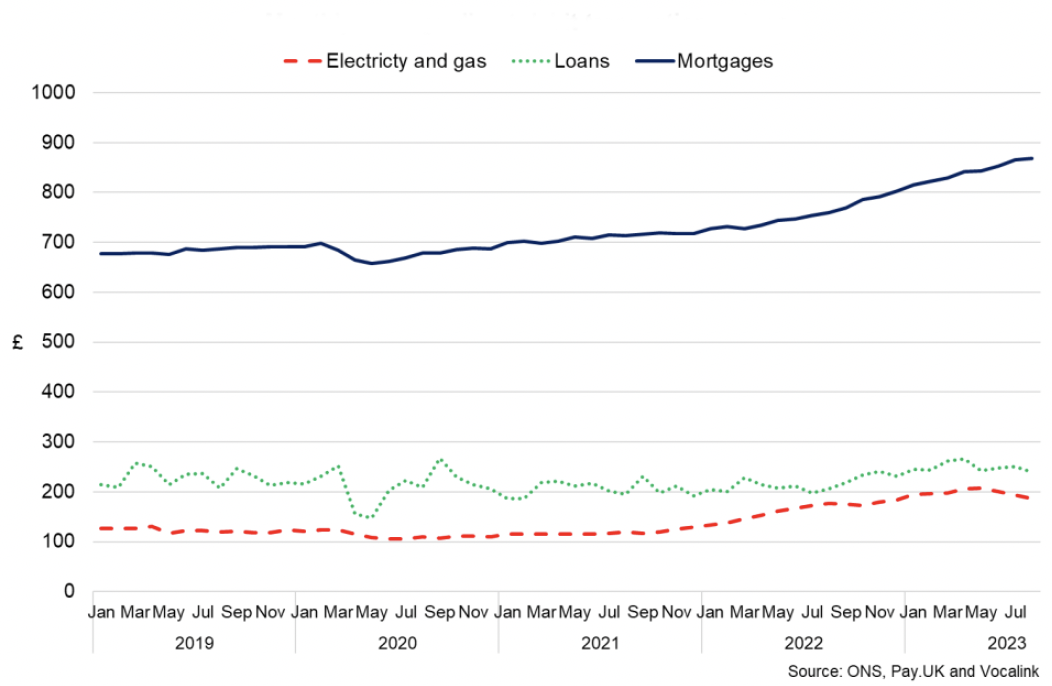Publication - Research and analysis
Scottish economic bulletin: October 2023
Provides a summary of latest key economic statistics, forecasts and analysis on the Scottish economy.
Consumer Activity
Inflation and higher interest rates are weighing on consumer sentiment and activity.
Consumer Sentiment
- Consumer sentiment indicators reflect the pressures that households face from higher inflation and interest rates and highlight the risks of weak consumer confidence to the economic outlook.
- Following a sharp drop in sentiment in 2022 to a low of -29.4 in October, latest data show that the gradual recovery in sentiment since then has paused in recent months. In August, the consumer sentiment Indicator increased by 3.5 points to -9.4, however fell over June and July and is now back broadly in line with its level in May (-9.2).[21]

- While sentiment has improved from last year, it remains negative overall and reflects the concerns that households have for the economy, their household finances and how relaxed they feel about spending money.
- Repondents continue to report that the economy and their household financial security are worse than last year, however on balance expect the economy to grow over the coming year (8.5). In contrast respondents still expect their houdehold financial security to worsen over the coming year (-3.2). Consistent with the concerns for housholds financial security, respondents on balance do not feel relaxed about spending money currently (-27.7).

- The indicators have strengthened over the year, reflecting improving sentiment, however have stabilised in recent months and likley reflects the persistant impacts that inflationary pressures are having on household finances and the increasing impacts of rising interest rates on the cost of existing and new borrowing.
Cost of Living and Spending
- The rise in cost of living and higher interest rates have progressively fed through to household decisions on spending (essential and non-essential) saving, and borrowing (including financing outstanding borrowing).
- For example, retail sales volumes in Great Britain have broadly stabilised over 2023 having adjusted back towards pre-pandemic levels over 2022. Latest data show sales volumes fell 1.4% over the year to August, however sales value grew 3.8%, with the divergence continuing to reflect the pace of rising prices over the past 18-months.[22]

- Similarly the rise in prices and interest rates have had a significant impact on the amount UK conumers are paying for their energy costs, mortgages and other loans. In August the average monthly direct debit payment for electricity and gas was £186.46 (up 56% compared to August 2021), £868 for mortgages (up 22%) and £239 for loans (up 23%).[23]

- The sharp increase in prices has been accompanied by an increase in the direct debit failure rate (the percentage of transactions that fail due to insufficient funds), reflecting the challenges facing some household budgets. For electricity and gas payments, the payment failure rate has risen to 1.09% in August, up from 0.47% in August 2021, while for mortgages it has risen to 0.46% (up from 0.25%).

- More broadly in September, the ONS Public Opinions and Social Trends survey showed that 42% of respondents were finding it very or somewhat difficult affording both energy bill payments and mortgage and rent payments. For energy bills, this was slightly lower than at the same point in 2022 (c. 46%), however has risen for mortgages payments from c.31%.[24]
- The more gradual but recent impacts of rising interest rates on mortgage payment challenges compared to energy payments, reflects the rise in interest rates over the past year but also the time it takes for the full impact of the increase in Bank Rate to be felt at an aggregate level due to the high share of mortgages that are on a fixed rate.

- Reflecting this, the 'effective' interest rate – the actual interest paid – on newly drawn mortgages rose by 16 basis points to 4.82% in August while the rate on the outstanding stock of mortgages saw a 9 basis point increase to 3.06%.[25]
- In response to the change in cost pressures facing households, ONS Public Opinions and Social Trends survey data from September show that the most common actions people were taking in response to the increased cost of living were spending less on non-essentials (69%) and shopping around more (50%). 47% reported using less fuel such as gas or electricity in their home and 46% reported spending less on food shopping and essentials.

Contact
Email: OCEABusiness@gov.scot
There is a problem
Thanks for your feedback